Evaluation Security Web-Based Information System Application Using ISSAF Framework (Case Study: SIMAK-NG Udayana University)
on
JITTER- Jurnal Ilmiah Teknologi dan KomputerVol 1,No 2 Desember 2020
Evaluation Security Web-Based Information System Application Using ISSAF Framework (Case Study:
SIMAK-NG Udayana University)
Ni Kade Mega Handayania1, Gusti Made Arya Sasmitaa2, Anak Agung Ketut Agung Cahyawan Wiranatha b3
aInformation Technology Department, Udayana University, Indonesia bInformation Technology Department, Udayana University, Indonesia cInformation Technology Department, Udayana University, Indonesia e-mail: 1megahandayani95@gmail com, 2aryasasmita88@gmail com, 3agung cahyawan@gmail com
Abstrak
Pendidikan merupakan salah satu bidang yang memanfaatkan teknologi informasi dalam mendukung kegiatan baik akademik maupun operationalnya. Teknologi yang banyak digunakan dalam bidang pendidikan adalah teknologi yang berbasis aplikasi web. Teknologi berbasis web memiliki kelemahan yang dapat dimanfaatkan oleh para penyerang untuk melakukan eksploitasi terhadap suatu sistem berbasis web. Sistem berbasis web perlu mempunyai jaminan keamanan yang baik dapat memberikan rasa aman bagi penggunanya. Universitas Udayana sebagai organisasi pendidikan juga menggunakan aplikasi berbasis web yang dikenal dengan SIMAK NG. SIMAK NG sebagai sistem berbasis web perlu dilakukan uji keamanan. Uji kemanan dapat dilakukan dengan penetration test. Penetration test dapat dilakukan dengan kerangka kerja ISSAF. penetration test berdasarkan kerangka kerja ISSAF ada 9 tahapan, meliputi information gathering, network mapping , vulnerability identification, peneitration, gainning acces and privilage escalation, enumerating further, maintain access dan covering tracks. Hasil pengujian penetration SIMAK NG pada tahap identifikasi celah ditemukan beberapa kerentanan sistem. Hasil akhir pengujian pada semua tahapan ISSAF pada SIMAK NG hanya ditemukan 11 kerentanan diantaranya 3 kerentanan level medium, 6 kerentanan level low dan 2 kerentanan level informational. Kerentanan yang sukses diuji diberikan rekomendasi perbaikan untuk menutup celah kerentanan sehingga tidak terdapat lagi kerentanan yang bisa digunakan oleh penyerang.
Kata kunci: Pendidikan, Evaluasi Keamanan, Uji Penetrasi, ISSAF, Website, Kerentanan, Keamanan
Abstract
Education is one of the fields that utilize information technology to support both academic and operational activities. Technology that is widely used in education is technology based on web applications. Web based technology has weaknesses that can be used to exploited by attackers. Web based systems need to have a good security guarantee to provide a sense of security for its users. Udayana University as an educational organization also uses a web based application known as SIMAK NG. SIMAK NG as a web based system needs a security test. Security tests with penetration tests. Penetration tests with the ISSAF framework. The penetration test based on the ISSAF framework consists of 9 stages, including information gathering, network mapping, vulnerability identification, penetration, gainning access and privilege escalation, enumerating further, maintaining access and covering tracks. The results of SIMAK NG penetration testing at the gap identification stage found several system vulnerabilities. The final results of testing at all stages of ISSAF at SIMAK NG only found 11 vulnerabilities including 3 medium level vulnerabilities, 6 low level vulnerabilities and 2 informational level vulnerabilities. Vulnerabilities that are successfully tested are given recommendations for fixes to close vulnerabilities so that no more vulnerabilities can be used by the attacker
Keywords: Education, Assessment Security, Penetration Testing, ISSAF, Website, Vulnerability
-
1. Introduction
Udayana University is a college in the education field Udayana University implements a web-based information system known as SIMAK-NG (Sistem Informasi Manajemen Akademik Kampus-New Generation) SIMAK-NG is a web-based information system application that is integrated with the single sign-on method on the IMISSU system (Integrated Management Information System, the Strategic of UNUD) which is a portal for all information systems at UNUD SIMAK-NG was built to support business processes in the academic field of the University which need to be guaranteed from a security side
SIMAK-NG system security is based on the gap identification stage carried out, there is still some vulnerability in the system The vulnerabilities found are still in the high threat level category This shows that SIMAK-NG still needs to do a security evaluation This security evaluation is necessary because every web application has a security vulnnerability that can be exploited by attaker
Penetration testing is an attempt by an attacker to exploit a system directly [1] There are many penetration testing frameworks, one of which is the ISSAF used in this study The ISSAF framework is a structured penetration testing framework for testing system weaknesses in depth to find as many vulnerabilities as possible[2] There nine step of ISSAF framework of penetration testing, but this studi will ekplain only 4 step, that is information gathering, network mapping, vulnerability identification
-
2. Research Method / Proposed Method
The research method used is based on the ISSAF framework Penetration testing consists of 3 phases, covering the preparation and planning phases, the assessment and reporting phases, the cleaning and destruction of evidence [3] The assessment stage is divided into 9 main processes The preparatory and planning phase begins by requesting research permission from USDI as the SIMAK-NG application developer

Figure 1 Data flow diagram general step of ISSAF Framework
-
Figure 1 show general step of ISSAF Framework that we should follow before we can do penetration, the first phase preparation dan planning include request permition to the target that will be attack, for SIMAK-NG depelover in USDI (Unit Sumber Daya Informasi) Udayana
University The next phase is is assessment, for this phase in this study we only explain step, that is information gathering, network mapping, vulnerability identification
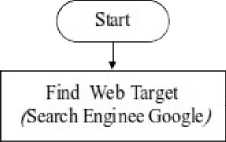
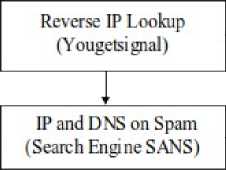
Search Index Sites (Wayback Machine Search *
Engine)
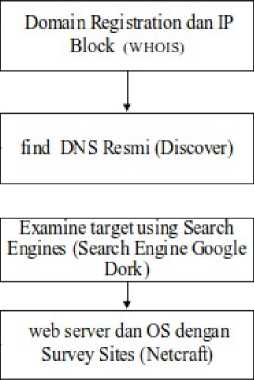
Figure 2 Data flow diagram information gathering

Figure 2 is diagram flow processes include obtaining target name information, identifying domain registration, target DNS identification, reverse DNS, getting more information using the help of a search engine, getting web server information from netcraft and getting web mirror results that are in historical web data [4]
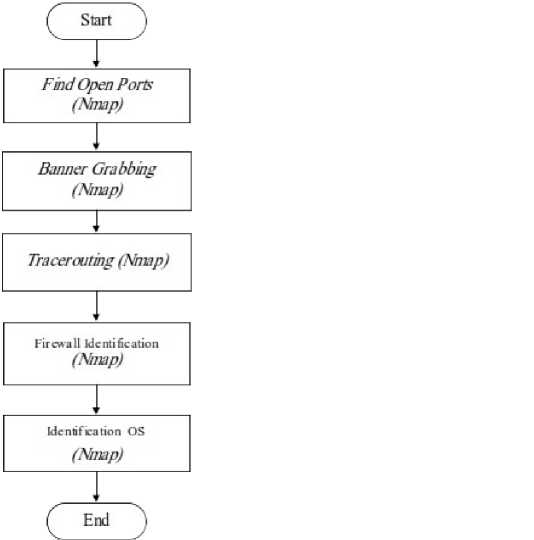
Figure 3 Data flow diagram network mapping
Figure 3 show proses that we do on stage of network mapping is get information open ports target, banners version of the technology used as consideration for further exploitation, perform tracerouting to get information on the closest router that is on the target, prove the existence of the firewall and identify the type of operating system target server [5]
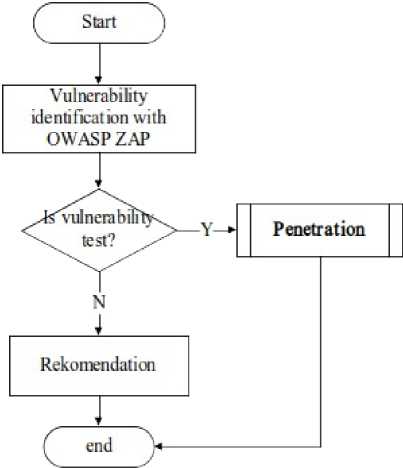
Figure 4 Data flow diagram vulnerability identification
Figure 4 show process in the stage of vulnerability identification, in this study we use OWASP ZAP as tool for scanning vulnerability The ZAP tool combine with information that we have on stage of information gathering and network mapping, after vulnerability list is complete we go to the next stage is penetration
-
3. Literature Study
The theory uses in this study is about penetration testing research using ISSAF framework from books and journals as a support in the research
-
3 1 Information Security
Information security is step keep information from possible threats, as a guarantee for business continuity, minimizing business risk (reduce business risk) and maximizing profits and business opportunities [6]
-
3 2 Vulnerability
Vulnerability is a flaw that allows to reduce the information security assurance of a system Vulnerability Assessment is a method that tests the security of interactive applications [7]
-
3 3 Penetration Testing
Penetration testing is a security testing activity that is permitted and legal to exploit the system as an effort to increase the level of system security The results of the pentration testing are system security gaps that are the recommendation for the repair of the system [8]
-
3 4 Blackbox Testing
Black-Box Testing is a testing technique that focuses on the functional specifications of software Blackbox Testing works by ignoring control structures so that attention is focused on domain information Blackbox Testing allows software developers to create a set of input conditions that will exercise all of the functional requirements of a program [9]
-
3 5 OWASP ZAP
OWASP ZAP (Open Web Application Security Project Zed Attack Proxy) biasa juga dikenal dengan sebutan Zaproxy, fungsinya sama dengan Burp Suite dimana kita dapat menggunakannya sebagai proxy [10]
-
4. Result and Discussion
This section will describe a process and result for each testing for information gathering, network mapping and vulnerability identification on this research
-
4.1. Information Gathering
The result of information gathering process of system SIMAK-NG Udayana, that is shows on the table above The status is for show that proses is success if the tools founds the evidence, and fail if the process is not found any a proof
Table 1 Result of Information Gathering
|
No |
Proses |
Tools |
Status |
Result |
|
1 |
Locate The Target Web Presence |
Seach enginge Google |
Success |
website SIMAK-NG URL simak-ng unud ac id Location Jimbaran, Badung |
|
2 |
Examine Domain Name System / Find Out Domain Registration Info and IP Block Owned |
Whois |
Success |
Block IP 103 29 196 0 - 103 29 196 255 email Linawati Linawati, email linawati@unud ac id |
|
3 |
Examine Domain Name System - Check for the Authoritative Name Servers |
Discover |
Success |
IP domain pada 103 29 196 139 |
|
4 |
Examine Domain Name System - Check for Reverse DNS lookup presence |
Yougetsignal |
Success |
2 domain beasiswa unud ac id dan simak-ng unud ac id |
|
5 |
Examine Domain Name System - Check Spam/Attackers databases lookup |
SANS search engine |
Fail |
Not found |
|
6 |
Examine target using Search Engines |
Google dork |
Fail |
Not found |
|
7 |
Search System/Network Survey Sites |
Netcraft |
Success |
OS Linux dengan web server ngix/1 14 0 |
|
8 |
Search Index Sites |
Wayback Machine |
Fail |
Not found |
-
Table 1 is a summary of the results of the information gathering stage testing with the main web address simak-ng unud ac id Important information at this stage includes the IP address of the web, the target domain name server, found OS information that can be used for testing the next network mapping stage
-
4.2. Network Mapping
The result of network mapping process of system SIMAK-NG Udayana, that is shows on the table above The status is for show that proses is success if the tools founds the evidence, and fail if the process is not found any a proof
Table 2 Result of Network Mapping
No Proses Tools Status Result
1
Find Open Ports
Nmap
success domain :simak-ng unud ac id IP :(103 29 196 139)
Port State Service
21/tcp Open ftp
22/tcp Open ssh
80/tcp Open http 110/tcp Open pop3 143/tcp Open imap 443/tcp open https 993/tcp open imaps 995/tcp open pop3s 3306/tcpopen mysql
|
8081/tcpopen blackice-icecap | |
|
2 Banner Grabbing |
Nmap Success • 21/tcp open ftp Pure-FTPd banner: 220---------- Welcome to Pure-FTPd [privsep] [TLS] ----------\x
OpenSSH 7 6p1 Ubuntu 4ubuntu0 3 (Ubuntu Linux; protocol 2 0) banner: SSH-2 0-OpenSSH_7 6p1 Ubuntu-4ubuntu0 3
Dovecot pop3d banner: +OK Dovecot (Ubuntu) ready
Dovecot imapd (Ubuntu) banner: * OK [CAPABILITY IMAP4rev1 LITERAL+ SASL-IR LOGIN-REFERRALS ID
Dovecot imapd (Ubuntu) banner: * OK [CAPABILITY IMAP4rev1 LITERAL+ SASL-IR LOGIN-REFERRALS ID
MySQL (unauthorized) banner: H\x00\x00\x00\xFFj\x04Host '180 249 119 114' is not allowed to |_connect to this MySQL server |
|
3 Identify Perimeter Network – Tracerouting 4 Identify Firewall |
Nmap Success Found Nmap Sukses open|filtered PORT STATE SERVICE 21/tcp open|filtered ftp 22/tcp open|filtered ssh 53/tcp open|filtered domain 80/tcp open|filtered http 110/tcp open|filtered pop3 123/tcp open|filtered ntp 143/tcp open|filtered imap 993/tcp open|filtered imaps 995/tcp open|filtered pop3s |
3306/tcp open|filtered mysql
-
5 Identify Os Nmap Sukses Running: Linux 4 X
OS CPE: cpe:/o:linux:linux_kernel:4 9
OS details: Linux 4 9
Table 2 is summary of the test results of the network mapping stage with the main web address simak-ng unud ac id Important information on the ports on the server from SIMAK-NG, there are many types of service ports, there are UDP, TCP, SMTP, SSH, HTTP and others
-
4.3. Vulnerability Identification
The result of vulnerability identification with owasp zap tools process of system SIMAK-NG Udayana, that is shows on the table above The status is for show that proses is success if the tools founds the evidence, and fail if the process is not found any a proof
Table 3 Result of Vulnerability Identification
|
No |
Vulnerability |
Level |
Status |
|
1 |
Anti CSRF Tokens Scanner |
High |
Test |
|
2 |
Remote Code Execution - Shell Shock |
High |
Test |
|
3 |
Remote OS Command Injection |
High |
Test |
|
4 |
SQL Injection |
High |
Test |
|
5 |
Backup File Disclosure Buffer Overflow |
Medium Medium |
Test Test |
|
7 |
Integer Overflow Error |
Medium |
Test |
|
8 |
Source Code Disclosure - SVN |
Medium |
Test |
|
9 |
X-Frame-Options Header Not Set |
Medium |
Test |
|
10 |
Absence of Anti-CSRF Tokens |
Low |
Test |
|
11 |
Application Error Disclosure |
Low |
Test |
|
12 |
Big Redirect Detected (Potential Sensitive Information Leak) |
Low |
Test |
|
13 |
Content Security Policy (CSP) Header Not Set |
Low |
Test |
|
14 |
Cookie No HttpOnly Flag |
Low |
Test |
|
15 |
Cookie Without Secure Flag |
Low |
Test |
|
16 |
Cross-Domain JavaScript Source File Inclusion |
Low |
Test |
|
17 |
Incomplete or No Cache-control and Pragma HTTP Header Set |
Low |
Test |
|
18 |
Information Disclosure - Debug Error Messages |
Low |
Test |
|
19 |
Strict-Transport-Security Header Not Set |
Low |
Test |
|
20 |
Web Browser XSS Protection Not Enabled |
Low |
Test |
|
21 |
Cookie Slack Detector |
informational |
- |
|
22 |
User Agent Fuzzer |
informational |
- |
Table 3 is The results of the identification of vulnerabilities contained in SIMAK-NG, this vulnerability is only the possibility of being detected by OWASP ZAP, but to get certainty that the vulnerability may or may not impact the system, it is necessary to carry out the next stage, namely penetration Vulnerability status which is not tested because it is in an informational threat level only
-
5. Conclusion
Final result is the correct results of vulnerability identification exist after passing through the next stage including pentration, gainning access and privilege escalation, enumerating futher, maintaining access and covering track with recommendations
Table 4 Final Result Test
|
No Vunerability |
Level |
Rekomendation |
|
1 Buffer Overflow 2 Interger Overflow Error |
Medium Medium |
Rewrite the background program using proper return length checking Rewrite the background program using proper checking of the size of integer being input to prevent overflows and |
|
divide by 0 errors | ||
|
3 X-Frame-Options Header Not Set |
Medium |
Setting X-frame-Option Header on
SAMEORIGIN |
|
4 Big Redirect Detected (Potential Sensitive Information Leak) |
Low |
Ensure that no sensitive information is leaked via redirect responses Redirect responses should have almost no content |
|
5 Content Security Policy (CSP) Header Not Set |
Low |
Ensure that your web server, application server, load balancer, etc is configured to set the Content-Security-Policy header, to achieve optimal browser support |
|
6 |
Low |
File htaccess atau httpd conf sebagai berikut Set-Cookie: <PHPSEDDID>=<cookie-value>; Domain=<simak-ng unuc ac id>; Secure; HttOnly |
|
Low |
Ensure JavaScript source files are loaded from only trusted sources, and the sources can't be controlled by end users of the application | |
|
Low |
Possible ensure the cache-control HTTP header is set with no-cache, no-store, must-revalidate; and that the pragma HTTP header is set with no-cache | |
|
Low |
Setting htaccess: X-XSS-Protection; 1, mode=block |
The conclusion of this research is that vulnerabilities that have been found and tested can be overcome with recommendations for improvement based on the ISSAF framework
The vulnerabilities that were successfully tested at the penetration stage became 11 vulnerabilities including 3 vulnerabilities with medium threat levels, 6 vulnerabilities with low threat levels and 2 vulnerabilities with informational levels only The recommendation to fix the vulnerability given succeeded in closing the existing vulnerabilities in SIMAK-NG The vulnerabilities that were found and successfully implemented did not have a major impact on the SIMAKNG system and it can be said that SIMAK-NG is in the safe category
References
-
[1] J N Goel and B M Mehtre, “Vulnerability Assessment & Penetration Testing as a
Cyber Defence Technology,” Procedia Comput. Sci., vol 57, pp 710–715, 2015
-
[2] A F Zulfi, “Evaluasi Keamanan Aplikasi Sistem Informasi Mahasiswa Menggunakan
Framework Vapt (Studi Kasus : Sister Universitas Jember).,” Institut Teknologi Sepuluh Nopember, 2017
-
[3] R E L De Jimenez, “Pentesting on web applications using ethical - Hacking,” 2016 IEEE 36th Cent. Am. Panama Conv. CONCAPAN 2016, no 503, 2017
-
[4] E Pratama and A Wiradarma, “Open Source Intelligence Testing Using the OWASP
Version 4 Framework at the Information Gathering Stage ( Case Study: X Company ),” MECS, vol 7, no July, pp 8–12, 2019
-
[5] R H Hutagalung, L E Nugroho, and R Hidayat, “Analisis Uji Penetrasi Menggunakan
ISSAF (Kasus di Server DTETI UGM),” Hacking Digit. Forensics Expo., pp 32–40, 2017 [6] M Parasian, “Audit Keamanan Sistem Informasi Automatic Meter Reading (AMR)
Menggunakan Framework Cobit 4 1 Dengan Standar ISO 27002:2005,” Udayana, 2015
-
[7] S Nagpure and S Kurkure, “Vulnerability Assessment and Penetration Testing of Web Application,” 2017 Int. Conf. Comput. Commun. Control Autom. ICCUBEA 2017, pp 1– 6, 2018
-
[8] P Engrebeston, The Basics of Hacking and Penetration Testing Massachusetts: Elsevier Inc, 2011
-
[9] T S Jaya, “Pengujian Aplikasi dengan Metode Blackbox Testing Boundary Value Analysis (Studi Kasus: Kantor Digital Politeknik Negeri Lampung),” J. Inform. Pengemb. IT, vol 3, no 2, pp 45–46, 2018
-
[10] Mr Doel, “Panduan Hacking Website dengan Kali Linux ” p 229, 2016
Discussion and feedback